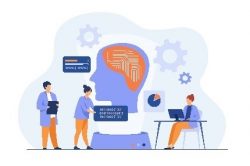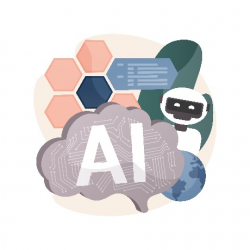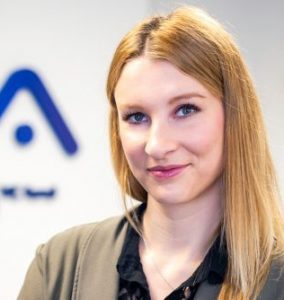Artificial Intelligence in the 21st Century.
How companies use the achievements of technology in their projects.
Recent years have seen a huge increase in interest in the applications of artificial intelligence, broadly defined, around the world. What exactly is artificial intelligence (AI) based on and how do the companies in Carlson Evig Alpha portfolio use it. You can read all about it in our latest post.
The breakthrough for artificial intelligence came in 2012, when a group of researchers led by Professor Geoffrey Hinton of the University of Toronto achieved a breakthrough result in an image recognition competition – the 2012 ImageNet Large Scale Visual Recognition Challenge (ILSVRC). They proved then that methods based on so-called deep neural networks are able to obtain much better results than other types of algorithms (more based on statistics or expert rules). The significance of this event was revolutionary insofar as success in the competition depended on processing huge amounts of image data.
Revolution in Poland and worldwide.

The aforementioned success was followed in 2012 by a revolution in various fields – DeepMind created an algorithm that beat the world champion in Go, image recognition systems can now detect cancer better than radiologists, face identification methods work with unprecedented efficiency, while speech recognition systems, especially in English, have reached previously impossible levels of accuracy. We could go on and on about the various applications and successes of methods based on artificial intelligence. We may not be aware of how such technologies are changing before our eyes. However, we are not far away from autonomous vehicles driving on the roads or assistants carrying out conversations on a human level.
In Poland we are still a bit further away from some applications than, for example, the United States, which massively tests self-driving cars or trucks on the highways. However, we live in the era of the Internet and all we need is a computer connected to the network and the intellectual abilities of a few talented engineers or researchers to have access to the latest technology. And we all know how many talented IT specialists are educated in Poland. There is certainly no shortage of people who have great ideas, as well as the talent and skills needed to catch up with the best teams in the world.
Artificial Intelligence in our Fund’s Portfolio

The Carlson Evig Alpha Fund has already assembled in its portfolio several companies that, thanks to advances in artificial intelligence and a skilled cadre of talented engineers, can create innovative applications of the latest technologies. The Seemore Aware project aims to create a solution for increasing the safety of motorcyclists through the construction of a spatial map of the road environment, recognition of objects on the road and full integration with the head-up display of the helmet creating a solution based on full augmented reality. Weave neural network architectures will be used for this purpose. Stereovision maps are also created in the case of real estate scanning using a smartphone in the WalkSee project, which uses an intelligent algorithm of stitching, i.e., sewing images, which allows to achieve accuracy similar to expensive equipment used so far for this purpose. The Deventiv company also creates such models, but in a completely different application, because related to the scanning not of rooms, but of the mouth. In the case of Biometric Security, deep learning algorithms are used for contactless human authentication on the basis of biometric data from the subcutaneous vein system of the hand. The fund also has an innovative bionic foot prosthesis project in its portfolio, ENforce Bionic Foot, whose sensors can “see” obstacles allowing amputees to move in difficult conditions. As for systems based on image processing, we should also mention the MMPay project, whose algorithms can detect forged documents using anomaly detection. So it can be said with certainty that all of the above projects are based on the latest splicing, deep neural network technologies – often the same ones that are behind the revolution that followed the aforementioned success of ImageNet in 2012 and the methods of this type used for this purpose. But the applications of artificial intelligence in Carlson Evig Alpha’s portfolio companies don’t stop there. After all, AI is not only about images, but also the ability to process various other data. The mCommissioner project helps bailiffs decide whether to take action on various cases. It may not please people with debts, but customers of the application will certainly be pleased with intelligent recommendation methods that optimize these processes. As you can see, the applications cover a cross-section of different, unusual categories. Add to this a system that monitors anomalies in the operation of huge mainframe systems in the Z-Rays project. Here, too, classical algorithms would not be able to cope with such volumes of data and the implementation of real-time event detection. The fast resolution of such problems is crucial for the operation of such machines. Finally, it is also worth mentioning the ePeer project, which concerns the creation of an intelligent P2P lending platform. In this case, artificial intelligence groups different types of people and is able to assess creditworthiness, thus reducing the risk of such processes.
It can certainly be said that most of the projects under the Carlson Evig Alpha Fund are based on innovative artificial intelligence systems. What is more, every day the Fund receives new pitchdecks of projects related to this. We observe a cross-section of applications and technologies in various categories. We are constantly on the lookout for innovative solutions developed by talented engineering and research teams and look forward to an even bigger rash of great ideas and initiatives.
Author: Marek Tluczek, R&D Commercialization Specialist at Carlson EVIG Alfa







